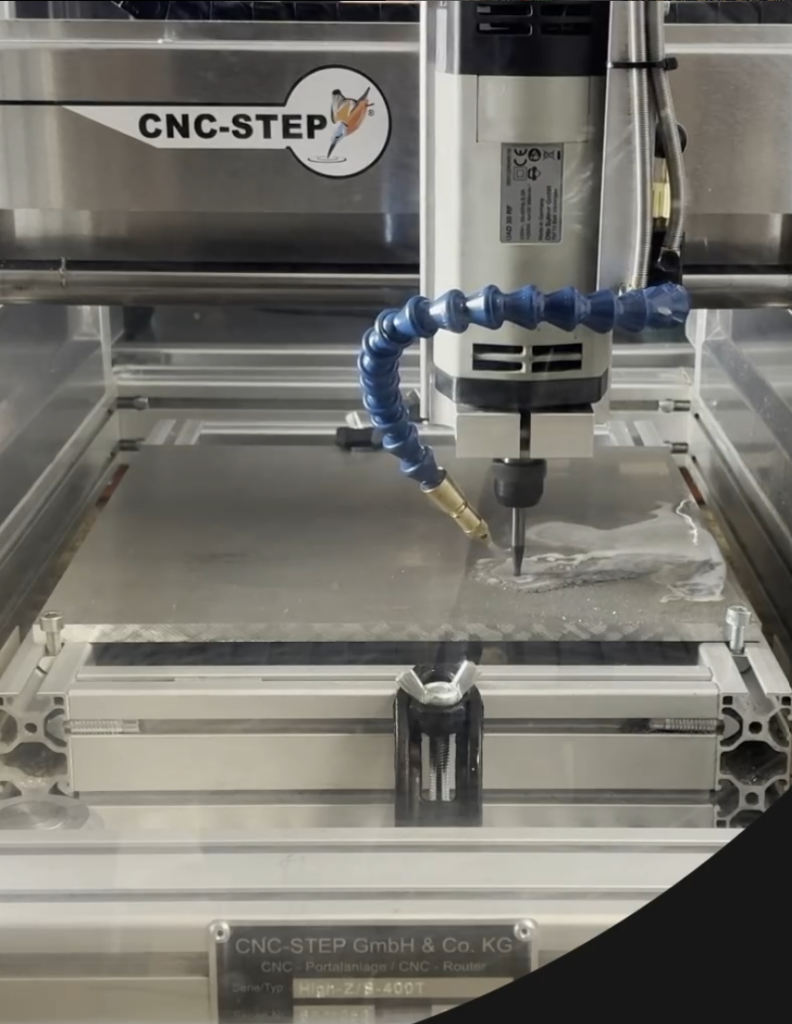What do you do when 3D-printed parts of your prototype can no longer keep up with the forces you are working with? You switch to metal, of course! With the help of a computer-operated mill, Team Tumbleweed’s engineers have been making great strides with the design of the Tumbleweed Mars rover—and preparing for some seriously adventurous testing.
Designing and prototyping the Tumbleweed Mars rover poses a set of unique engineering challenges for the team’s engineers. Due to the novel approach, each part of the rover requires many rounds of testing, often with only small tweaks in between to improve the mechanisms. One of the most challenging aspects has been the rover’s nodes: These nodes help the Tumbleweed rover unfold into its characteristic spherical shape at the right time. Due to the complex design, the nodes have been a main focus in the team’s prototyping process over the past year.
While prototyping, big changes can happen fast with new ideas. Following a day’s work in the workshop in November, inspiration struck the Tumbleweed engineers over drinks. They had been struggling with insufficient force in the mechanism, meaning the node could not make the rover unfold fully into its spherical shape. In that one evening, the team changed their approach from a one-stage to a more complex two-stage mechanism. “It was quite a big redesign. The mechanism looks similar but the design of it we started from scratch and completely changed it. We had to iterate quite a lot and we’re still working on that,” Lead Mechanical Engineer Ben Placke shares.

While increased force was necessary to get the rover into shape, the 3D-printed prototypes used by the engineers could not keep up. With forces in the node mechanism having tripled over the past months, the 3D-printed parts began to break, increasing the need for a more durable solution. Through contact with the German company CNC-Step, the team’s engineers were able to get a computer numerical control (CNC) mill—for Ben, a “game changer”.
Instead of requiring manual manoeuvring, a CNC mill is controlled by input from a computer. In the case of the Tumbleweed, it cuts aluminium into precise shapes, resulting in significantly stronger nodes. Compared to conventional mills, the possibilities of shaping a certain part are almost endless. Ben explains that this is not the only advantage of using the CNC mill: “By having metal instead of 3D-printed parts, we can also decrease the size of some, making them smaller, thinner. Therefore, despite the higher density of metal, you can still make it quite light because it is more durable, which is very important for our work.”
To make sure the node reliably opens upon command during the rover’s descent to Mars, the engineers must test it rigorously in various different conditions. This goes from simple performance tests during assembly up to large drop tests to see the node’s functionality when integrated into the rover structure with other parts. During these tests, the increased strength of the newly milled aluminium parts is again essential. For an upcoming drop test, where the Tumbleweed prototype will be deployed from a height of 100 meters, the engineers are aiming for a completely metal-machined node. Follow-up experiments will truly put the mechanisms’ strength to the test, going from a height of 900 meters all the way up to a suborbital flight mission from around 90 kilometers.
Through the support of CNC-Step, the team can work with a mill that is perfectly suited to the needs of the Tumbleweed. Ben is convinced that the mill holds many more options for prototyping the Tumbleweed rover: “It is a small but very versatile machine for the work that we do, which has a lot of small components so the precision of the machine is very useful.” In the future, added accessories, such as increasing the number of axes the mechanism can work along as well as automatic tool changers, mean that the mill can be adapted for other parts of the rover.
Thank you to CNC-Step for their support of the team by providing us with the CNC-Step High Z-S400T. To learn more about their products, visit cnc-step.de.
For further information, please contact office@teamtumbleweed.eu.